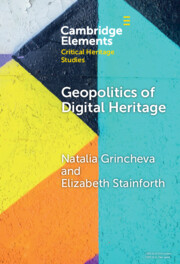Element contents
Geopolitics of Digital Heritage
Published online by Cambridge University Press: 18 January 2024
Summary
Keywords
- Type
- Element
- Information
- Online ISBN: 9781009182072Publisher: Cambridge University PressPrint publication: 08 February 2024

